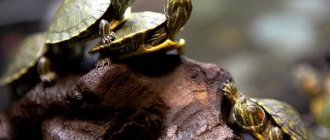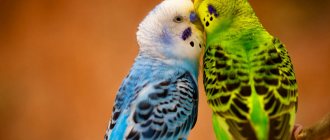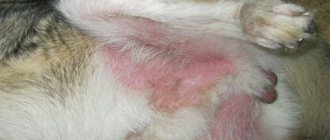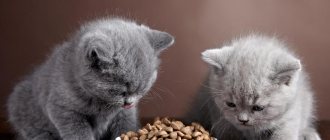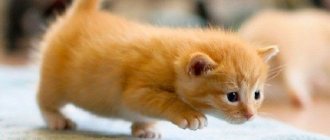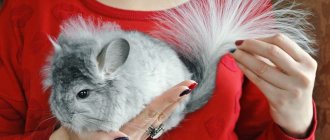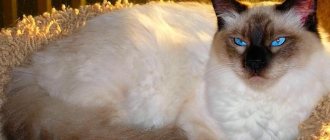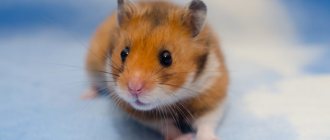The history of finches in cages
Finches are miniature birds that belong to the weaver finches family. There are more than 30 species of them in the world. These are heat-loving creatures, so they live mainly in Africa, Australia and Southeast Asia.
The Japanese finch was the first to be domesticated. This happened more than 400 years ago, as mentioned in historical materials. These birds appeared on the European continent much later, in the 18th century.
Interesting fact: the Japanese finch can be an excellent nanny for the chicks of other species, so they were often kept for this very purpose. Their ancestors lived on the Philippine Islands, from where they came to Japan and China.
At the same time as the Japanese birds, rice finches also found themselves in cages. They were discovered on the islands of Java and Sumatra, and later they spread to Southeast Asia.
Zebra finches and Gould's finches are native to Australia. The former often settle near human habitation, are not afraid of noise and are accustomed to being close to people. Data on keeping these birds in captivity date back to the second half of the 19th century. And in the twentieth century, zebra finches were already widely known in Western Europe.
Gould's finches were discovered by British naturalist John Gould in 1838-1840 during his travels in Australia. This species was named in honor of his wife Elizabeth, who accompanied her husband on the trip, but soon died. They were brought to Europe in 1887-1915.
Common types
To date, 38 species of Amadins and more than three hundred subspecies are known. Thanks to selection, the species number is updated every year. Among the most popular are the types presented in the table below.
| Name Amadin | Habitat | Peculiarities |
| Japanese finch or Japanese pearl finch | Japanese Finches were bred in Japan by crossing the Bronze Manakin with Chinese or Japanese species of Finches. They are found only in captivity (mainly in Japan). | Japanese finches have a gray head, throat, wings, and tail, and a brown chest, belly, back and back. Calm and unpretentious birds are easy to keep and can live together with other bird species. Japanese Finches can mate with all members of their Family. The offspring acquire a very original appearance, but at the same time they turn out to be sterile (not able to reproduce). |
| Zebra | Zebra Finches are distributed throughout Australia. | Males, which are larger in size, have orange cheeks and a beak with a red tint, while females have gray cheeks and an orange beak. Males like to sing a lot, and “ladies” like to listen and remain silent. This species can go up to 2 weeks without fresh water, and if absolutely necessary, drink sea water. Females lay eggs only during the rainy season. From the beginning of the 19th century, zebra finches began to be bred at home, where white zebra finches with black eyes were bred. |
| Rice | They appeared in Bali and Java, but are now found on all continents. | They got their name because of their great love for rice and raids on rice fields. Considered to be the largest. Their length reaches 15 cm. |
| Guldova | Gould's finches live in the north of the Australian continent. Considered an endangered species! | Gould's finches were named after the wife of the scientist who discovered them, Gulda. They have the brightest colors. They often migrate in search of food and water. It is quite difficult to breed them at home, since the birds are quite susceptible to temperature fluctuations. Gulda finches are bad parents. If there is a lack of nutrition, they can abandon their chicks. When breeding at home, it is recommended to also acquire a pair of Japanese Finches, who will happily nurse abandoned offspring if necessary. |
| White | They live in Australia, Africa, and South Asia. | Birds don't sing well. And the outwardly white plumage is not completely white. You can often find feathers of different shades on the body - black, red, green, blue, yellow, purple. |
| Sharp-tailed | Distributed on the Australian continent. | The birds got their name from their appearance - a sharp tail, the length of which reaches 8 cm. These parrots are very loyal to each other. Nests are built only on eucalyptus trees. |
| Red-throated | Natural habitat - southwestern territories of the African continent. | The main feature is the presence of red plumage on the neck area. |
| Chestnut-breasted | Habitat: Australia, New Guinea. | The birds are very similar to sparrows, since their color is dominated by brown tones. |
| Scaly-breasted | Can be found in China, India, and the islands of Indonesia. | Against the background of brown plumage, the beautiful gray-white scaly pattern of the belly stands out, for which the birds were given their name. Birds of this species build their spherical nests higher than all their relatives. |
Video of Amadina
Appearance and description of the finch
Finches are cheerful, friendly and active birds with bright plumage. Despite the fact that they are songbirds, they do not sing in the best way. Their songs are similar to duck quacks.
The size of an adult is small, from 10 to 15 cm, weight up to 50 g. A distinctive feature of all finches is their beak. It has the shape of a slightly curved triangle, quite thick and transparent, as if made of wax. Because of this, finches are also called wax beaks. Chicks have black beaks, while adults have red or orange beaks.
In the wild, these birds live in large flocks. They always nest in pairs and lay from 2 to 4 eggs. Today there are 38 known species of finches, here are the most popular ones that you can have at home:
1. Zebra finch. It got its name from the striped color of the area from the beak to the crop. Birds can go without water for a long time, and drink much less than their fellow birds. They are quite noisy and active. This is the most popular type of house finches.
2. Japanese finch. They do not occur in nature, because... this species was bred artificially. Outwardly, they do not differ in bright plumage, but they have a friendly character.
3. Amadina Gulda. These birds have a very bright, rich color with clear contours of color transition. It is not easy to keep them at home, because they love warmth very much and cannot stand the cold. They are comfortable at a temperature of 25-30 degrees.
4. Rice finch. They like to be close to rice fields, hence the name. These are the largest finches, some individuals can grow up to 20 cm. They are noisy, and often behave aggressively with smaller birds.
Conditions for keeping and caring for finch at home
Caring for and maintaining finches at home is a responsible matter. After all, the health of the pet and its mood depend on this.
Since finches are school animals, it is better if they live in pairs; one bird can get sick and even die from boredom.
The cage should be quite spacious, approximately 60*40 cm, rectangular in shape. Finches are not comfortable in round cages; they begin to fly randomly and become restless.
Cage equipment:
1) wooden perches for each bird;
2) two drinking bowls;
3) feeders;
4) bath for bathing.
Finches are very clean, so the cage must be kept clean at all times. Feeders and drinkers should be washed up to 4 times a week, and drinking water should be changed daily.
These birds require certain living conditions. The temperature in the room where the birds live should be about 22 degrees. Finches love sunlight, so they need to be placed in such a way that the cage is in the light.
In the summer, you can take them out to the balcony for a while to warm up, but at the same time, make sure that the birds can hide in the shade from the sun's rays. In winter, you need to additionally illuminate the cage with a special lamp.
Amadins do not tolerate drafts and dampness well, this can even make them sick. The cage should be located away from strong and unpleasant odors, for example, tobacco smoke, nail polish, and so on.
MOLTING FINEMINE GULDA. FEATURES OF MOLTING GOULD'S FINCHES.
Molting in Gould's finches is a difficult period in life. Those. On the one hand, molting is a common phenomenon, but the owner of the birds must be aware that at this time the bird is weakened and needs especially careful care. Periodically, the bird experiences a natural change in plumage - this is a normal phenomenon caused by hormonal and physiological activity.
It is necessary to create all conditions for a safe and quick feather change for Gould's moulting finch.
During this period, the bird’s diet and daylight hours change. Those. those factors that are directly related to how this process will occur.
The duration of daylight hours is gradually reduced to 8 hours.
The following types of physiological molting are distinguished:
— juvenile (children's),
— seasonal (sometimes called annual).
- stress shedding
Juvenile molting begins in Gould's finches, around 2 months, and the down and flight feathers are replaced.
As a rule, young female Gould's finches molt faster than males. They can change into adult clothes by 3.5 months,
whereas male Gould's finches finish molting only at 4.5-5 months. It happens that the first chick moult in Gouldian finches lasts up to 7-9 months. There is an opinion that a bird that molts for a longer period of time later becomes larger than its counterparts that molt by 4-5 months. The fact that the bird is molting can be seen by the new blood-filled feather edges; they are especially clearly visible on the head and neck in the form of an unblown feather located in a tube. . When changing plumage, there should be no bare parts of the body; the newly formed feather is covered with the old one, which has not yet been replaced. During molting, the bird's need for sulfur-containing amino acids sharply increases. The change in plumage is associated with the function of the thyroid gland.
The mechanism of natural molting is associated mainly with the endocrine glands and the function of the central nervous system. The stimulator of periodic molting is the hormone produced by the thyroid gland - thyroxine.
The change in plumage is influenced by
:) duration and intensity of illumination, daylight hours are reduced to the physiologically acceptable level for tropical birds, a minimum length of 8-10 hours. )) temperature and humidity in the room where the poultry is kept. When the temperature in the room where the molting bird is kept rises to 30-35 degrees C, molting will occur much faster.
Natural shedding does not require medical intervention. How to help Gould's finches during molting?
As mentioned above, this is a set of measures that includes the correct light regime, enhanced nutrition, enriched with the provision of additional vitamins and minerals necessary for Gould’s finches during the chicks’ and then annual molting.
During molting
, the need for amino acids and minerals for feather formation increases significantly. At this time, the bird should be provided with sulfur-containing substances and amino acids. Feeding of Gould's finches during molting. First of all, this is a complete, varied diet, vitamins, special iodine and sulfur-containing supplements. To prevent possible problems during molting, you can give the bird medications containing vitamins and microelements.
In Goulds, the average duration of molting is about 2-2.5 months Stressful unscheduled molting
can begin from stress, due to illness and after the nesting season, and factors such as: - lowering temperature,
- reduction of daylight hours,
- unfavourable conditions ,
- a change of scenery ,
- transfer to another room.
The timing of stress molting can drag on indefinitely.
Vitamins and minerals used in Gould's finches during molting Tsamax for songbirds and ornamental birds
Tsamax is made from zeolite and sulfur-containing substances. The medicinal properties of Tsamax are due to the fact that zeolite is a powerful sorbent, ion exchanger and catalyst; sulfur-containing substances promote the synthesis of a number of amino acids in the body and are associated with the regulation of metabolism. Zeolite literally pumps out heavy metals, mercury, radionucleides, nitrates and phenols from the body, cleansing the body of toxins. Once in the gastrointestinal tract, the drug helps slow down the passage of food, which promotes better absorption of nutrients. Zeolite is similar to a sponge, in the pores of which many microelements necessary for the body are concentrated, such as potassium, sodium, calcium, magnesium, phosphorus, etc. We can say that it is filled with dry mineral water. By absorbing heavy metals, it gives these microelements to the body. The total effect of zeolite and sulfur-containing components helps to increase the protective forces of the immune system, normalize mineral metabolism, and improve the functioning of the gastrointestinal tract. Indications for use:
- Anteriorosis and alopecia (delay, cessation of growth, feather loss);
- Cannibalism (pecking, plucking and eating feathers);
- Non-infectious gastrointestinal diseases (diarrhea, etc.);
- To increase the thickness of egg shells;
- To improve the quality of the pen;
- to improve the quality of feathers, beaks and claws;
- for the formation and strengthening of the skeleton.
The drug contains: zeolite, sulfur, magnesium, phosphorus, iron, potassium, calcium, sodium, copper, etc.
Directions for use and consumption rates: The drug is mixed with food immediately before feeding once a day. For treatment at a dose of 6% by weight of the feed, for prevention 4% by weight of the feed and given for 3-4 weeks. If necessary, the course of treatment is repeated after 2 weeks. For prevention, the dose is 0.006 g per bird weighing 20 g.
(add to soft food). Laminaria is an edible algae, belongs to the class - brown seaweed. It contains a lot of iodine, which is contained in organic form. It is sold in health food stores or pharmacies.
Read more about vitamins and minerals
*********************************
Question: I’ve had an under-molted male Gould for about a week and a half now and I don’t see any signs of continued molting...
Please tell me, can juvenile molting be interrupted, or has it stopped and why could this happen?
Will it affect his health if he remains half in his chick plumage until the next molt and will he molt completely next time?
answer: This reaction of young Gould’s finches is inherent in them and is a reaction to stress:
- decrease in temperature,
- reduction of daylight hours,
- unfavourable conditions ,
- a change of scenery ,
- transfer to another room.
This plumage may remain until a new full-fledged molt, or juvenile molt may continue.
answer: The stress was apparently from the move... although he got used to it quite quickly, he’s still getting used to it
question: Please tell me, how often do Gouldian finches molt?
answer: Under normal conditions, Gould's finches molt twice a year. Usually, after oviposition is completed and the chicks are fed, the parents begin molting along with the last brood.
There is an observation that males react more strongly to stressful molting than females.
******************************
FINCHES, CANARIES AND OTHER FEATHERS ON - THREE A 12+
Typical colors of finches
As we already know, there are many varieties of finches, and therefore their colors come in a variety of colors.
1. Zebra finches typically have ash-gray plumage and a red beak. Their cheeks are red, their belly is light, with a yellowish tint, and the craw area has characteristic horizontal stripes.
2. Japanese birds are inconspicuous in appearance. They are most often brown or cream in color, with a light belly and beak.
3. The drawings are ash-gray. The head and tail are black, the cheeks are white, the belly is gray-pink, the beak is red. There are also completely white individuals.
4. Gould's finches have bright, variegated colors that include blue, black, red, yellow, purple and green. There are black-headed, red-headed and yellow-headed finches.
Feeding finches at home
Let's figure out what to feed finches at home.
The basis of their diet is millet. Usually a special grain mixture is prepared to feed these birds. To 1 kg. Millet is added with 100 g of rapeseed, lettuce and chumiza, oatmeal, mogar and hemp. You can add 50 g of flax seeds and always meadow herbs (dandelion, clover, plantain, etc.), 200-250 g. For one bird, a teaspoon of this mixture per day is enough.
You can give finches porridge, vegetables, fruits and berries, but little by little. The pet menu should also include finely chopped eggs and cottage cheese, and during the breeding season - bloodworms, worms and other insects.
Don’t forget about mineral additives: chalk, sea or river sand, crushed eggshells.
Under no circumstances should finches be given aromatic herbs (dill, parsley, basil, etc.), this can lead to the death of the pet. Also, you should not feed your pets food for other poultry (canaries, parrots).
Conditions for caring for and keeping finches
Selecting a cage and its arrangement
Like any other pet, the finch needs its own corner. A spacious cage is suitable for her. In a limited space, the bird will begin to rush around and hit the walls, so a high rectangular cage measuring at least 50x50 cm is the best option. In such a home, a couple of finches will feel comfortable and will soon breed offspring.
Cages for Australian birds are made from various materials:
- Metal. All-metal grilles let in a lot of light, which is necessary for heat-loving finches. The cells are easy to clean and disinfect. Rectangular structures are convenient if you need to place several cells in a room, placing them on top of each other. The disadvantage of a metal home is the excessive noise when finches move.
- Tree. The cage is made of soft wooden rods, which prevents the bird from getting hurt on the walls. The design does not cause inconvenience to birds and owners in the form of noise. But the tree is afraid of dampness, which is why the cells do not last long.
- Synthetic materials. Cells can be made of plexiglass or getinax. They are hygienic, durable, but do not tolerate hot water.
A finch cage can be made from several materials, but you need to know that copper wire is unsafe for pets: when such a cage oxidizes, aggressive fumes are released into the air, which have a detrimental effect on the health of birds.
Although Australian birds do not require much water, waterers should be provided in the cage. It is better to purchase special closed devices so that excrement does not get into the water and birds do not wash their feathers in the drinker. If an aviary is prepared for finches, then it is permissible to install open-type drinking bowls. Settled clean water should be poured into the drinking container.
For bathing, you need to set aside a separate place in the cage and place a bath of water at room temperature there once a week.
One feeder per cage is enough. To prevent the birds from turning it over, it is better to install a tray with food between hanging perches. The depth of the feeder should be at least 2.5 cm.
Finches are active pets, so perches made of natural wood are installed in their homes. At the pet store you can purchase additional accessories for poultry: swings, houses.
Home care
Proper arrangement of a home for a finch is not the only nuance. To prevent the bird from getting sick, it is necessary to regularly clean the cage. To maintain cleanliness, the following equipment is used:
- scoop;
- brushes and brush for disinfection;
- syringe;
- scraper;
- glass pipettes.
Every week, all the sand is scraped out of the cage and new sand is added. The finches' home and all accessories must be disinfected with carbolic water. Every month the cells are treated for parasites. The walls, floor and perches are cleaned of dirt, washed with hot water, treated with disinfectants and the preparations are thoroughly washed off.
Microclimatic conditions
Birds love sunlight very much, so the cage must be placed near a window on a low table or stand. Birds only need 2-3 hours to bask in the sun. The average room temperature should be at least 20˚C. The room where the cage with finches is located should be ventilated with caution, since the birds do not like drafts and temperature changes.
The level of humidity plays an important role: it affects the structure of the feather. For a room with finches, 60-70% humidity is sufficient. If the room is dry, then place a container of water on the windowsill or table.
Sharp sounds and smells frighten pets. Birds get excited when they see a stranger, especially a smoker, or a cat nearby. Such sudden situations worry the finch and sometimes lead to the death of the bird.
What to feed the finch?
The basis of amadin nutrition is multicomponent grain mixtures. Do not feed birds parrot or canary food. Finches need a special composition, including:
- millet;
- hemp seeds;
- rape;
- oatmeal;
- flax and meadow grass seeds.
Additionally, cereals available in the house are poured into the mixture: buckwheat, rice or millet. Birds are fed once a day, not exceeding the volume of the grain mixture: 1 tsp is needed for one bird. stern.
The daily diet also includes:
- fresh vegetables and fruits;
- berries;
- boiled eggs;
- cottage cheese.
During the breeding season, Australian birds especially need a balanced diet in order to produce healthy offspring. To do this, finches are offered live food: bloodworms, worms or coretra.
In summer, chopped dandelion, plantain or lettuce leaves are poured into the feeder. In winter, fresh greens are replaced with sprouted grains of wheat, millet or barley. Fragrant herbs have a detrimental effect on the finch’s body, so spices should never be given to birds. The same rule applies to vitamin supplements for parrots sold through a chain of pet stores.
Breeding finches at home
Finches reproduce well in captivity, so if certain conditions are met, the offspring will not keep you waiting long.
During the mating season, a pair of finches is placed in a separate cage, where it is necessary to prepare a small house for them in which they will build a nest. You also need to provide the couple with building material to create a nest. These can be twigs, straw, dry grass, feathers, and so on.
After a week, the nest will be ready and the female will begin to lay eggs, usually from 2 to 4 pieces, but maybe up to 6. The male and female hatch the eggs in turns. In order for the breeding of finches at home to be successful, during the brooding period you should not disturb or frighten the birds by trying to look into the nest, otherwise the finches may abandon the clutch.
After 2 weeks, small chicks are born. Parents feed them from the crop, even after the chicks grow up and leave the nest. The babies live in the nest for three weeks, after which they grow up and leave it. And the parents can start laying eggs again. It is necessary to limit the number of nestings, otherwise the female may become exhausted and die from frequent clutches.
Amadina is considered an adult at one and a half months, and puberty occurs by six months.
Contents in the apartment
Most Amadins do well at home. But in order for the birds to feel comfortable and delight their household with their singing, it is necessary to understand all the nuances of their life and prepare well. Experienced breeders do not recommend keeping several different species in one cage at once, so as not to provoke conflicts between birds.
What to feed
Not only the bird’s appearance, but also how long it will live depends on nutrition.
Feeding schedule:
- 1-2 times a day.
- Wet food – 1-2 times for 7-10 days.
- Green food – 3-4 times a week.
- Cereals, seeds - daily.
Food dosage – 1-2 tsp. feed mixtures per day.
| The diet should contain: | |
| Grain, grain mixtures, microgreens of which: Millet Buckwheat Millet Corn Sunflower Oats Barley Wheat Rice (boiled) | Seeds: Canary grass Flax Rapeseed Hemp Clover Alfalfa Plantain Timothy grass Shepherd's purse Fescue |
| Vegetables: Zucchini Tomatoes Peking or Brussels sprouts Broccoli Carrots Sweet peppers Cucumbers Beets Pumpkin Patisson | Fruits: Melon Pear Apples Bananas Peaches Branches of fruit trees, as well as willow, linden, birch |
| Berries: Cherry Cherry Raspberry Rowan Currant | Greens: Clover Nettle Dandelion Lettuce Plantain Peas Woodlice Sorrel Begonia Tradescantia Hibiscus |
| Protein supplements: Eggs Cottage cheese (low-fat) Bloodworms Insects with larvae Mealworms Fish oil Such supplements are especially important during the breeding season | Mineral impurities: Gravel Sea sand Shell rock Egg shells Charcoal Bone meal Cuttlefish shell (sepia) |
| Birds should be given filtered boiled water to drink. But fresh fruits and berries with the addition of lemon juice, compotes, decoctions, and infusions are also allowed. | |
Prohibited:
- dill; - onion; - avocado; - persimmon; - mango; - papaya; - parsley.
Finches can remain unattended by their owners for up to 7 days. The main thing is to provide them with food and water during this period.
Which cell to choose
Housing requirements for Amadins:
- Parameters – from 0.3x0.2x0.25 cm (per bird) rectangular in shape.
- The distances between the rods are 1-1.5 cm.
- Material for the cage – acrylic, plastic, polycarbonate, wood.
- The tray is retractable.
- Equipment - two poles, a drinking bowl, three feeders, a bathtub, a nest (if desired, breed).
- The presence of a strong lock on the door.
- The permitted temperature range is +18-+240С, humidity – 50-80%.
When the temperature drops below +100C or rises above +380C, Amadins die! Also, you should not smoke, spray deodorizing substances, paint, or cook food near birds.
Light mode
Amadins are quite light-loving birds. Therefore, the cage with pets is placed in the brightest place without drafts, away from noise. But at the same time, you should make sure that the birds are not exposed to direct sunlight for more than 3 hours. In winter, birds are extended daylight hours to 12 hours with the help of additional artificial light sources.
Hygiene and bathing
Finches are not demanding pets, but they are quite clean and do not tolerate dirt. Therefore, the cage and equipment need to be cleaned regularly, as well as the bedding must be constantly changed (paper bedding is changed daily, while others - sand, gravel - every 3 days). Once a month, the cage and equipment are disinfected using special disinfectants or boiling water.
An important moment for birds is bathing. It helps them clean their feathers and restores normal skin turgor. A porcelain or plastic bath can be placed on the bottom or hung from the walls of the cage. For birds, a bath a little larger than themselves with a depth of 1 cm will be enough. Water for bathing is suitable at room temperature, but it must be filtered and settled. After bathing, the water is drained and the bath is washed.
Care during shedding
Molting is a physiological process for all birds. She does not require special care, but will require some assistance from the breeders. Domestic Finches need to add vitamins to their diet - you can purchase special veterinary supplements or diversify the menu with fruits, berries, and vegetables. In addition to food, the birds are recommended to rest - a minimum of contacts (it is even better to place the pets in separate cages). When the birds begin to sing loudly, we can assume that the molt is complete.
How long do they live?
If all the recommendations of ornithologists are followed, Amadins in captivity can live up to 12 years. In captivity, the lives of birds are negatively affected by:
- Poor care and nutrition.
- Failure to comply with sanitary and hygienic conditions of detention.
- Infections.
Possible diseases and their prevention
Finches are susceptible to viral, parasitic, fungal and bacterial pathologies. Among them, there are those that affect all birds (ornithosis, coccytosis, hypovitaminosis), and there are those that only affect weavers (tracheal mite, alopecia).
Main source of infection:
- new individuals that have not passed quarantine;
- low quality food;
- parasites;
- poor living conditions.
When birds become ill, certain symptoms appear:
- become passive, hide their head under their wings;
- roll their eyes;
- They drink a lot, eat a lot, or vice versa - refuse to drink with food.
At the first signs of the parrot, it is recommended to take it to the veterinarian for diagnosis and treatment.
Breeding at home
The optimal reproductive age of Amadins is from 1 to 5 years. To get offspring from birds at home, they need to recreate the necessary conditions:
- Form a pair of healthy birds without defects.
- Enrich your pets' diet with proteins (insects, worms, larvae).
- Maintain a temperature of 18 to 20°C with a humidity of about 80%.
- Control the duration of daylight hours.
- Set up a nesting house made of wood (dimensions about 0.12x0.12x0.12 cm) or provide soft grass for building a nest.
- Provide peace for birds during the breeding season.
Incubation and feeding falls entirely on the shoulders of the feathered parents. Strong chicks aged 1.5-2 months can be removed from the nest. But these birds are gregarious by nature, so they will live in large families on a permanent basis.
Amadin's abilities
Poultry farmers call Amadins the most beautiful, cheerful and friendly pets. Birds are highly intelligent, but, alas, they cannot be trained and do not learn human speech.
But it is possible to tame a parrot if you take into account some recommendations:
- Choose young birds for training.
- Train each bird separately.
- Trim the wings to prevent the pet from running away.
- Gradually increase the time spent holding the bird in your hands.
- Encourage your bird with treats.
After taming the bird, at the sight of its owner, it will itself ask for freedom with the help of loud cries.
Video Handmade zebra finch
How Amadins sing
The singing of weaver birds is one of their main advantages, although some breeders see a negative side to loud trills. Vocal abilities are predominantly males. With the help of singing, parrots communicate with each other, report danger, ask for food, or simply show a good mood. But each species of Amadin has its own type of singing:
- Gouldians make a monotonous sound “sit” or “tssitt”;
- the zebra hums in quiet trills, reminiscent of the voice of a small child;
- scaly ones produce something similar to “sweeping” and “chip”;
- black-headed munia cannot be heard by humans (singing can only be distinguished by the opening beak);
- the Japanese hum “tilili” in parallel with a special creak;
- red-throated ones chirp like sparrows;
- Moluccans rarely, but emit a peculiar short “tr-rrrr”;
- the rice ones ring like bells or babbling brooks;
- chestnut-breasted birds sing short but very melodic trills;
- from pearlheads you can hear “pit”, “cyt”, “krr”;
- Malabar whistle or chirp.
Differences between male and female finch
To successfully breed finches, you need to be able to distinguish a male from a female, otherwise you can purchase same-sex birds at a pet store.
In some species of finches, sex differences are visible in color. Males usually have brighter plumage than females. For example, male zebras have orange-red cheeks, the typical zebra neck coloring, and brown flanks with white spots. Females don't have this, they are just grey. The beak of males is a richer red color, while that of females is paler, closer to orange.
Red-headed finches only have red heads on males. Chestnut-breasted males have a white belly and dark stripes on the chest and sides. Females have duller stripes and a gray belly.
There are species of finches whose gender cannot be determined by their plumage. Therefore, you need to listen to their singing. Males sing louder and more than females. Also boys are usually larger. Their beaks are brighter and larger than those of girls, and also have a slight hump.
Amadine chicks look the same, both males and females. They are light gray with black beaks. Only after two months will it be possible to determine the sex externally.
Appearance of a zebra finch
The color of male and female birds varies slightly. Males are usually ash gray or whitish in color with dark gray and black markings. There are dark stripes on the sides of the head that extend down from the eyes.
Zebra finch (lat. Taeniopygia guttata)
Like a gradient, the zebra pattern gradually fades into darker colors all the way to black. The bird has many white spots on its sides. This whole motley composition is completed by a brown tail and a bright coral beak. The female's appearance is a little more modest: she lacks the zebra pattern on her chest and throat. The young are similar in color to the females, but are browner in color. The beak of small chicks is black, unlike adult finches.
Compatibility of finches with other poultry and animals
Zebra and rice finches can be aggressive, especially during mating season. Even birds of the same species cannot always get along in the same cage, which can be said about other birds. Therefore, it is better not to share anyone with the finches, in order to avoid conflicts and fights.
It is also dangerous to keep them next to parrots, as they can bite the legs and fingers of finches, and this is a very serious injury for small birds.
If you have a spacious enclosure, then zebra finches can get along with Japanese finches, rice finches and canaries.
Life expectancy of finches at home
Before purchasing a feathered pet, you need to find out how long finches live at home. With proper care, they can live quite a long time, up to 10 years.
The main thing is to take good care of your pet, give balanced food, place the cage correctly, away from electrical appliances and sources of noise, provide enough light and protect it from cold and drafts.
If there is a dog or cat in the house, you need to make sure that the finch does not become prey for them. It is also worth making sure that the bird cannot fly out of an open window and take precautions.
Diseases of finches at home and treatment methods
When a bird lives with one owner for a long time and receives proper care, it rarely gets sick. Attention should be paid to recently acquired individuals and not to put them in a common cage, so as not to infect existing birds. You need to put the newbie away for a month and watch him.
What may alert you: lethargy and low activity of the bird, weight loss and lack of appetite, sounds and songs, changes in plumage, stool consistency. A sick finch can sit on a perch for a long time, ruffled, lumps and neoplasms may appear on the body, and often sneezes and yawns.
If these symptoms appear, take your pet to a veterinarian immediately for examination. Before that, you need to arrange for the finch to drink plenty of fluids.
The main diseases characteristic of finches:
1) diarrhea and intestinal inflammation (occurs due to poor quality and monotonous nutrition and an abundance of greens in the diet);
2) tracheal mite, signs: baldness, nasal discharge, rapid breathing, constantly open mouth;
3) eimeriosis, which mainly affects chicks (characterized by loose stools mixed with blood and mucus, convulsions or paralysis);
4) borreliosis, transmitted through tick vectors, characterized by fever, thirst, pale mucous membranes and paws, exhaustion.
To prevent many diseases, it is worth thoroughly cleaning the cage, periodically disinfecting it, and taking care of the birds’ hygiene and balanced diet.
